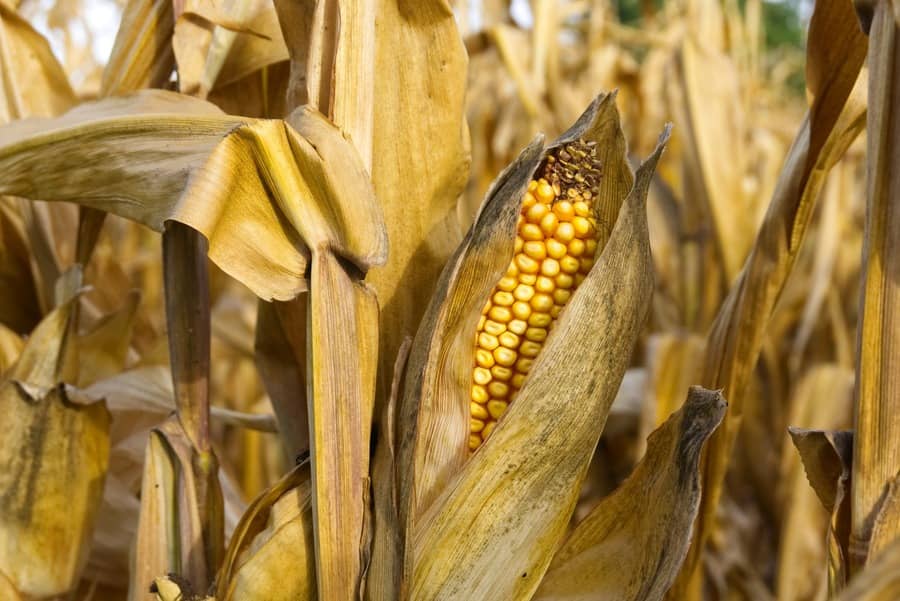The Brazilian domestic market has in its favor the high exports registered to date. Brazil now has 33 mln tons committed to exports and may set a new annual shipment record. The volume to be shipped between October and January will be important for evaluating whether there will be a consistent price improvement or not. For now, the domestic market is trying to find some space for a price reaction simply due to the growers’ retention and the weak stock strategy of regional consumers. We remain concerned about the price picture for the end of the year, from the grower’s perspective, given the excellent condition of the crop in RS and SC at the moment, the possibility of a higher percentage of wheat for feedstuff, the weather trend, and the large corn supply still accumulated in the domestic market, mainly in Mato Grosso do Sul, Paraguay, and Paraná.
The USDA report possibly frustrated most agents who had been conveying the idea of a huge crop failure in the United States in 2023. The crop has its problems but it is in line with the last two records. So, even with some correction downward until the final number next January, the curve for the CBOT is not upward. Thus, what remains for the Brazilian market is a focus on exports.
On the one hand, unfortunately, the domestic consumer market, or part of it, still tends not to implement stock replenishment when prices plummet, as is the case this year. We have registered a period of strong supply and low sorghum prices, as well as, we still have satisfactory corn prices for replenishment. This lack of positioning leaves the market subject to isolated changes. When this portion of the market, not positioned in terms of stocks, resumes purchases, finds a more comfortable situation on the selling side, with part sold, part allocated to warehouses, and with a lower selling pressure.
On the other hand, we have quite aggressive exports leveraged by China in August and September. The Brazilian line-up for September maintains appointments above 10 mln tons for the month, with shipments of 4.2 mln tons already carried out. For the year, the commitments amount to 33.9 mln tons, with appointments already set for October and November. This picture gives us a potential export curve for 53/55 mln tons this year. Can this shipment be greater? Of course, but with the need for shipments between October and January to reach at least 6 mln tons/month.
In August, Brazil registered many shipments to North African countries, besides China, already reflecting an effect of the war and the difficulties for commercial ships to cross the Black Sea. Possibly, this is still occurring in these high shipments of September. With a greater balance in the Black Sea, the entry of the US crop from now on, and the Chinese and European harvest, it seems more difficult for Brazil to repeat the significant shipments for the October/January period. Of course, demand and shipments will continue to occur. However, a shipment level closer to the Brazilian routine can be expected. The biggest risk is that the United States exercises aggressive selling power from October and limits Brazilian sales.
In any case, we still have aggressive trading companies shopping in the Brazilian domestic market for October and November. Owing to the potentially earlier arrival of soybeans from January, some of them are starting to limit corn commitments for January onward. Last week, with the slowdown of the CBOT and the exchange rate, prices at ports returned to levels of BRL 62/63 in Santos and BRL 59/60 in other ports. Santos has strong shipments at the moment, and this is helping premiums in this port.
Basically, we do not have a great new fact to boost domestic prices, and the main support continues to be the excellent export sales flow and retention by growers. The question now is: how long will this corn retention be supported? With almost 10% of soybeans already planted in Paraguay, starting to advance in Mato Grosso do Sul, western Paraná, and Mato Grosso last week, one point stands out, that is, the arrival of the soybean crop from mid-January. Many growers are delaying corn sales to wait for some improvement in prices, which is normal. Warehouses remain crowded, and, at some point from November, if not before, these logistics will have to be prepared for soybeans with the removal of corn.
Regionally, the market is trying to show some reaction. In São Paulo, due to good demand in Santos, the market balanced itself around BRL 50 in the interior, but offers of taxed corn stayed stable to higher. This tries to help prices on B3, and market agents end up betting on potential highs until November. These movements are normal and reflect a post-harvest framework. However, without consistent hikes in ports, there is little room to support this psychologically bullish movement.
Follow the Safras Agency on our website. Also follow us on our Instagram and Twitter and stay on top of the main agribusiness news!
Copyright 2023 – Grupo CMA

